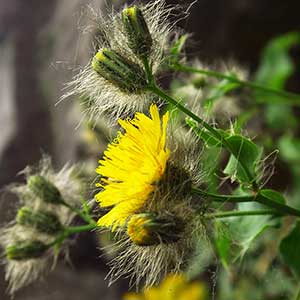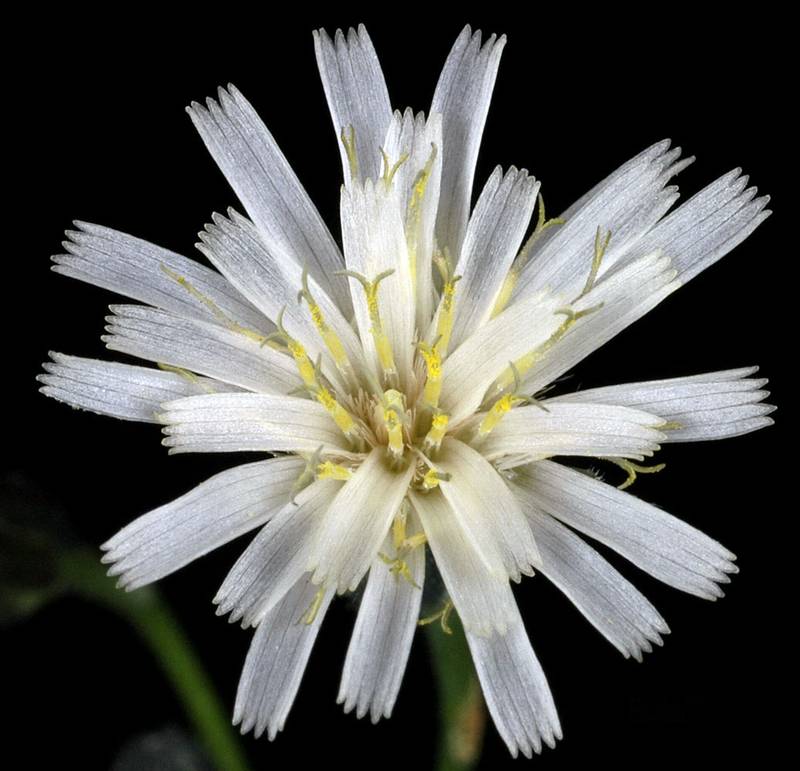Hieracium longiberbe
Hieracium albiflorum
long-bearded hawkweed
white hawkweed, white-flowered hawkweed
: Leaves alternate, several, the lowermost reduced and early-deciduous, those next above the largest, up to 12 cm. long and 3 cm. wide, the middle ones well developed and only gradually reduced upward;
leaves thin, often toothed, with bristly hairs on the margins, but sparsely hairy to glabrous on the surfaces.
Basal and lower cauline leaves persistent and tufted, mostly entire, 4-17 cm. long including the short petiole, and 1.2-4.5 cm. wide; middle and upper leaves sessile and reduced; stellate hairs wanting.
Heads few to several in a flat-topped inflorescence;
involucre 9-11 mm.high, with fine, stellate hairs and a few long bristles;
corollas all ligulate, yellow
Heads several to many in an open inflorescence, on slender peduncles;
involucre 6-11 mm. high, narrow, blackish-green, nearly glabrous;
corollas 13-34, all ligulate and white;
pappus of whitish capillary bristles.
Achene.
Achenes ribbed and grooved longitudinally.
Hieracium longiberbe
Hieracium albiflorum
- Local floras:
BC,
CA,
OR,
WA
- Local Web sites:
CalFlora,
CalPhotos,
Flora NW,
PNW Herbaria,
Turner Photog.
WildflowerSearch
iNaturalist (observations)
USDA Plants Database
- LBJ Wildflower Center
- SEINet
- Plants of the World Online
- Encyclopedia of Life
- Wikipedia
- Google Image Search



